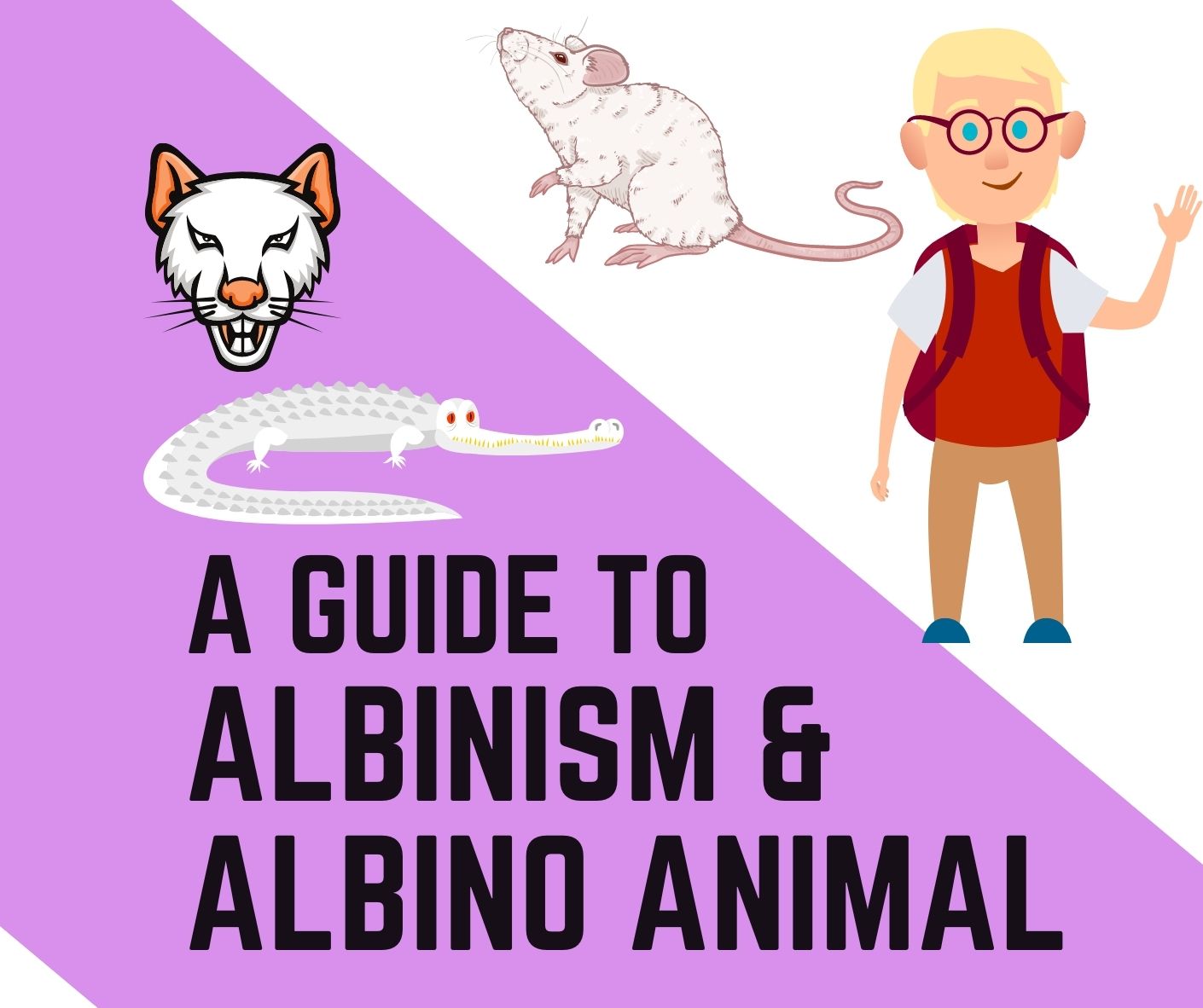
Before we proceed let me tell you why I write this post, many of us have confusion about Albinism, albino animals, and Albino Amphibians.
They consider them as skin diseases that spread via physical contact which is actually not correct.
Some even consider the animals or humans suffering from albinism as Aliens or Outsiders.
If you are a beginner enthusiast and confused with all these questions, then this article will surely help you out, so let us dive in.
So, What is Albinism? is it a disease?
Albinism is actually a genetic disorder inherited from parents of both humans and animals Respectively. Which makes it quite clear that it is not a communicable disease.
This condition is characterized by either less or no melanin production thereby reducing the amount of melanin pigment formation in the skin, hair, or eyes.
What Causes Albinism in Animals?
How does Albinism occur in Animals?
Similar to humans, albinism occurs in an animal when a mutation of the TYR gene that delivers pigmentation and melanin occurs.
The TYR gene is completely non-functional. This leaves a lack of melanin in the skin as well as the inability to deliver color to hair via the follicles.
Distortion in Eye colors means that in animals, most of the time the eyes are red.
In some cases of albinism in animals, eye colors are a very bright, light, or crystal blue color almost appearing white.
Albino Animals – Facts and Information
Albino animals are often vulnerable members of their own species.
This is due to their inability to blend with their surroundings, making them vulnerable to predators.
Some species, such as birds and reptiles, suffer from partial albinism affecting only patches of their skin.
Some species are intentionally bred and are used for scientific experimentation to study albinism.
Many species have red eyes, which is due to the number of blood vessels that are retained in the retinal area.
What are the types of Albinism?
There are 2 main types of albinism
- Oculocutaneous albinism (OCA) – It affects the skin, hair, and eyes. it’s a common type of albinism.
- There are 3 types of OCA namely OCA type 1, OCA type 2, and OCA type 3.
- Ocular albinism (OA) – It mainly affects the eyes, this is a rarer type of albinism.
Different levels of albinism
We can further subdivide the 2 main types into 7 types as mentioned below:
7 known forms of oculocutaneous albinism – OCA1, OCA2, OCA3, OCA4, OCA5, OCA6, and OCA7.
Albino Amphibians
Albinism is not as uncommon as in other species. Salamanders, frogs, and toads are all subject to albinism.
Frogs and toads are not typically all white, Most have streaks or patches of light color such as orange and yellow.
These amphibians must be kept in an environment where ample shade is present.
Amphibians live their lives 50/50 with that time being split between land and water.
Albino Salamanders
Salamanders usually prefer climbing trees and buildings. It is rare to see an albino salamander in daylight hours.
They spend most of their time in a wet, swampy area. Simply speaking, a salamander can literally cook to death in the sun within just a few minutes.
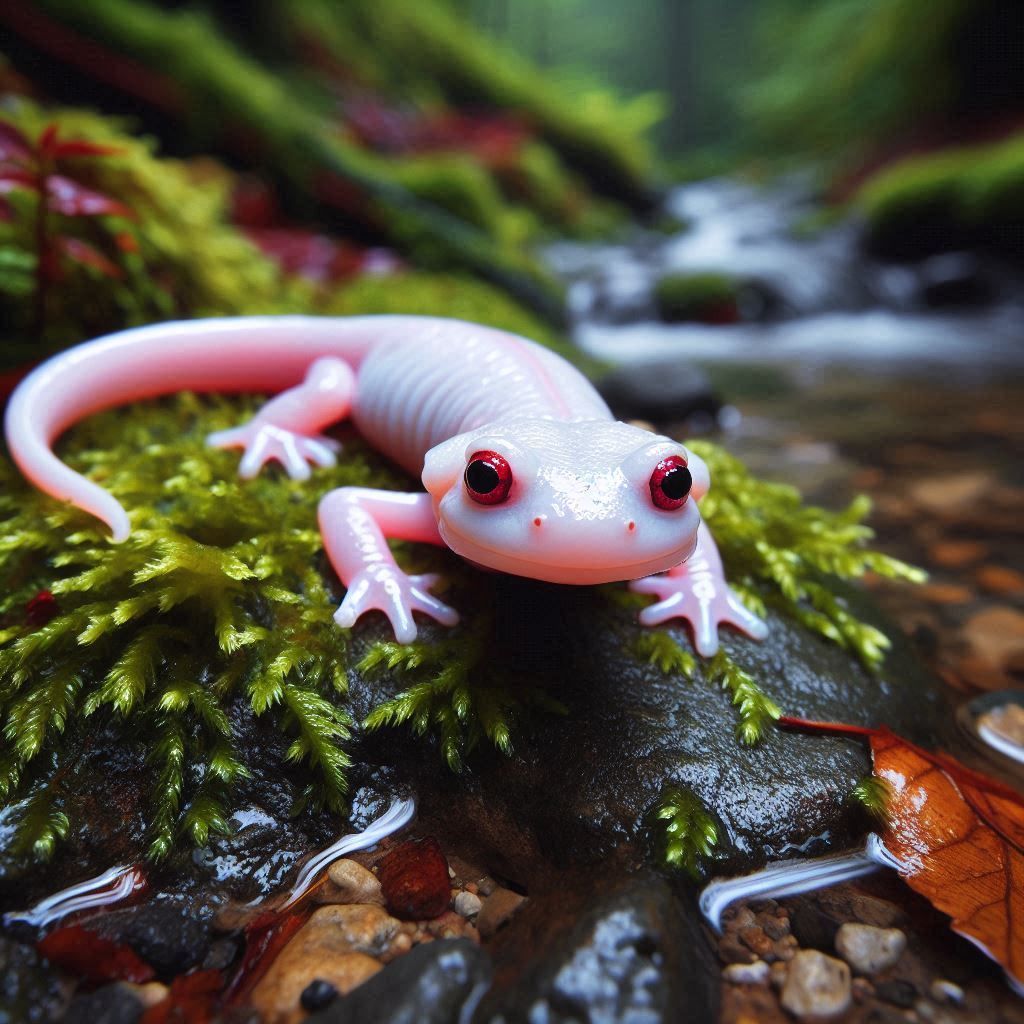
Albino Toads & Frogs
An albino frog or toad can withstand a short time of sun exposure, Their skin will begin to dry and wither quickly.
Before sunrise and just after dusk is when an albino frog or toad is most likely to travel away from water and prey on mosquitos, flies, and other bugs for nourishment.
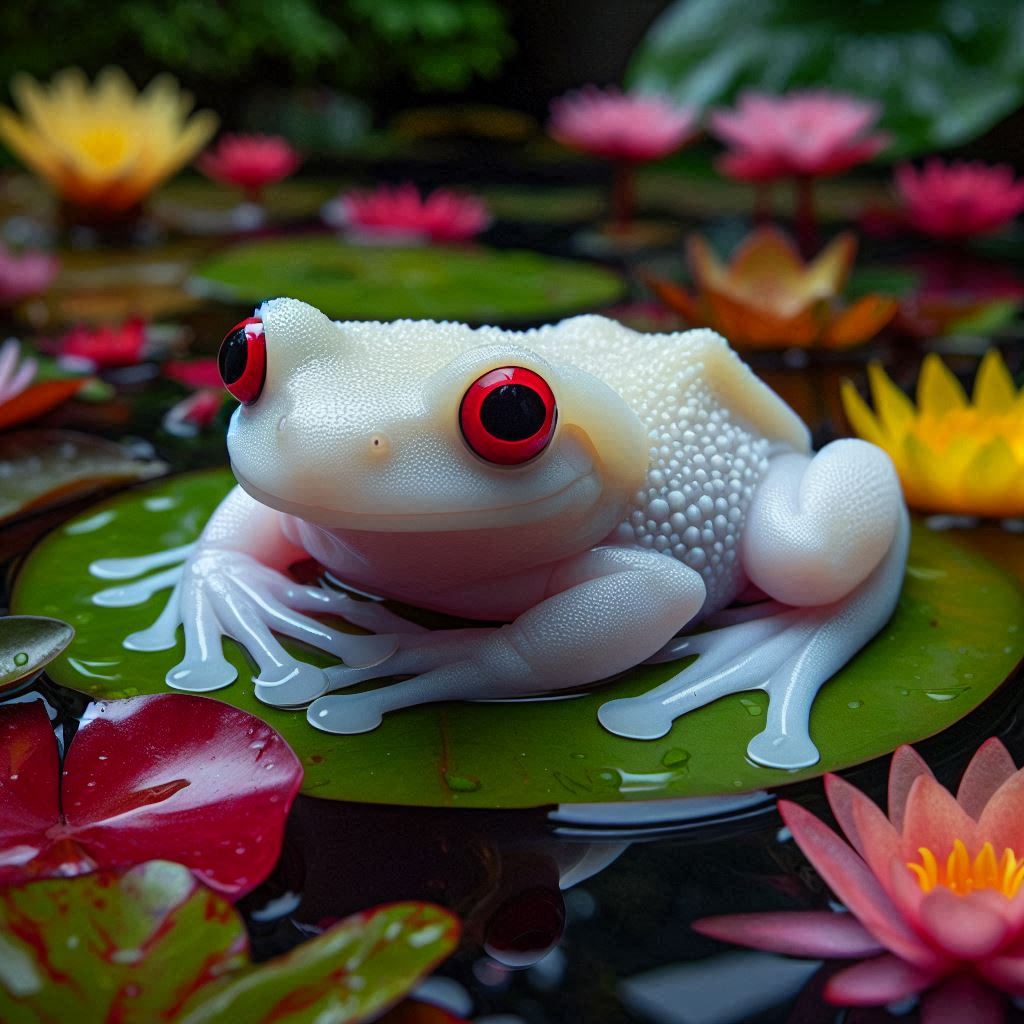
Albino Lion
Most commonly referred to as the white lion, the albino lion is a rarity.
Due to fur colors taking on a cream or tan appearance as this species ages, technically not an albino animal.
A recessive gene occurs in a small percentage of lions, failing to deliver pigmentation to the hair follicles.
As the lions are young, and into early adulthood, their color is bright white and their eyes are a crystal blue,
almost white or faint gray hue. As the lion ages, skin and hair colors can change slightly to have tinges of cream or tan.
The white lion is a Kruger subspecies, which is native to the Timbavati area.
It is unknown why a dominant number of albino lions is within this subspecies as Timbavati is just a 200sq mile radius.
They exist for several hundred years but come to the public eye in the 1970s.

Albino Gorilla
There is only one albino Gorilla documented, in the Barcelona Zoo Spain displayed for visitors to view.
Snowflake, the albino gorilla, lived for 39 years. His breed was Western Lowland Gorilla.
All others of this breed have been charcoal in color, including his mother.
It is quite odd that this Gorilla, who lacked pigment and melanin, fathered 22 offspring and none, were albino.
Even the offspring of those fathered by Snowflake was not albino.
It was also rare that a gorilla would live to be this age as most only live to the age of 25.
When this gorilla was captured, it was the intention of Jordi Sabater Pi to ensure that Snowflake was put into a protective living situation, such as that at the zoo where he lived his life.
Pi was mesmerized by the light blue color of the gorilla’s eyes and the fact that he functioned and resembled a normal gorilla but lacked the true color.
Other than sensitivity to light and the development of skin cancer, everything about this gorilla was true to the species.
The reason for albinism in this particular gorilla is still unknown.
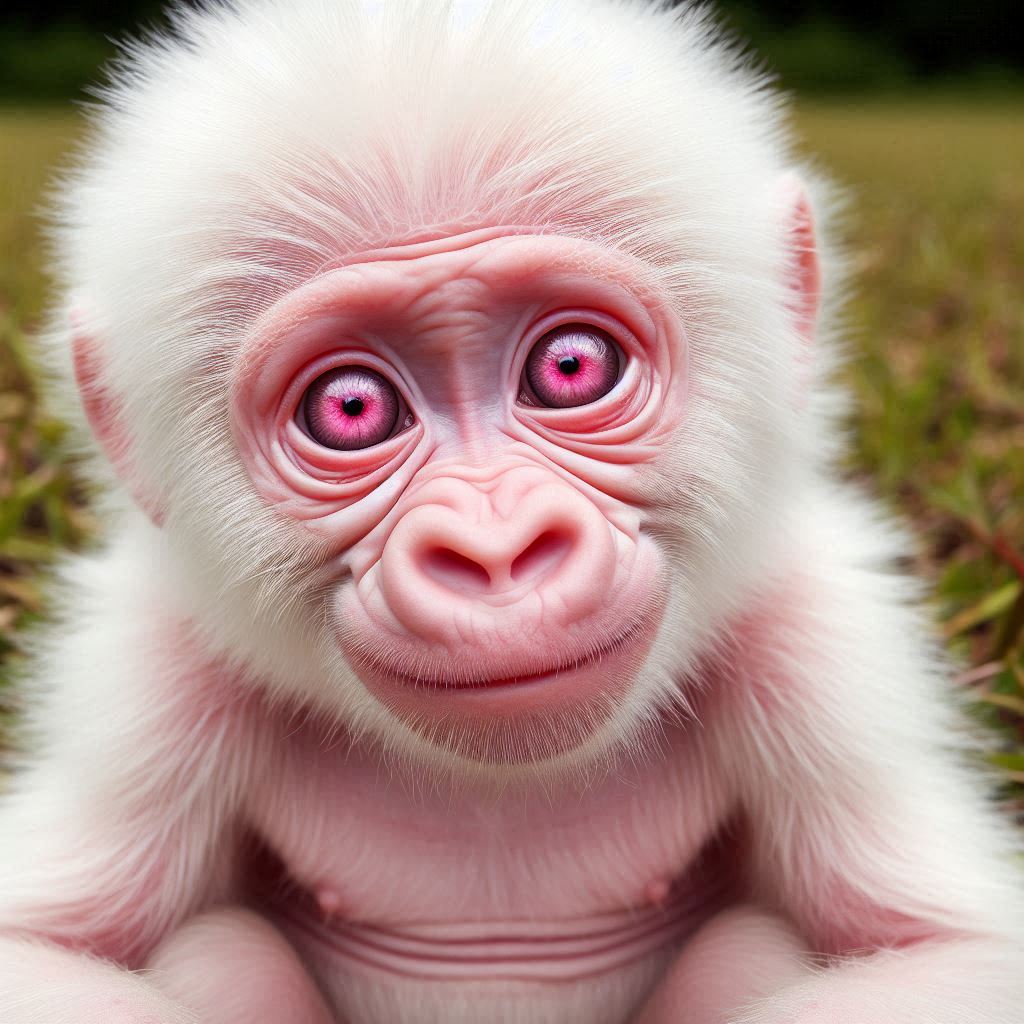
Albino Snakes
Partial albinism is more common than absolute albinism in snakes.
This is a case where melanin and pigment delivery from genetic mutation is present.
For snakes that are generally colors patterns, a faint blue, peach, or yellowish coloring.
The classification comes from the inability for full color to be present, such as black, red, brown, and other colors.
The eyes of an albino or partial albino snake are typically red or pink.
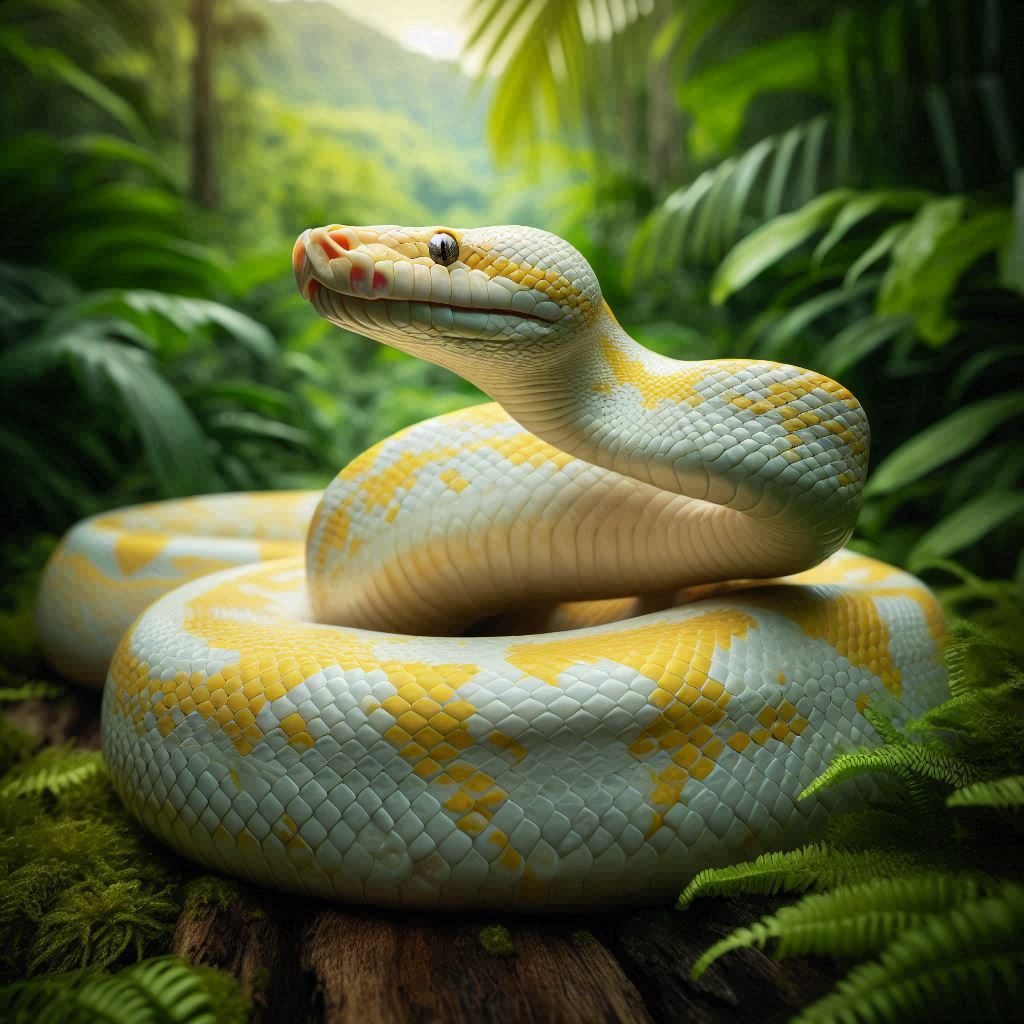
Even with the classification of albino, a snake can remain in the sunlight for several hours with minimal harm.
Their bodies are made to withstand dry ground and exposure to the sun.
Corn snakes and larger snakes, such as a boa or diamondback, are commonly affected by albinism with a pink or yellowish color.
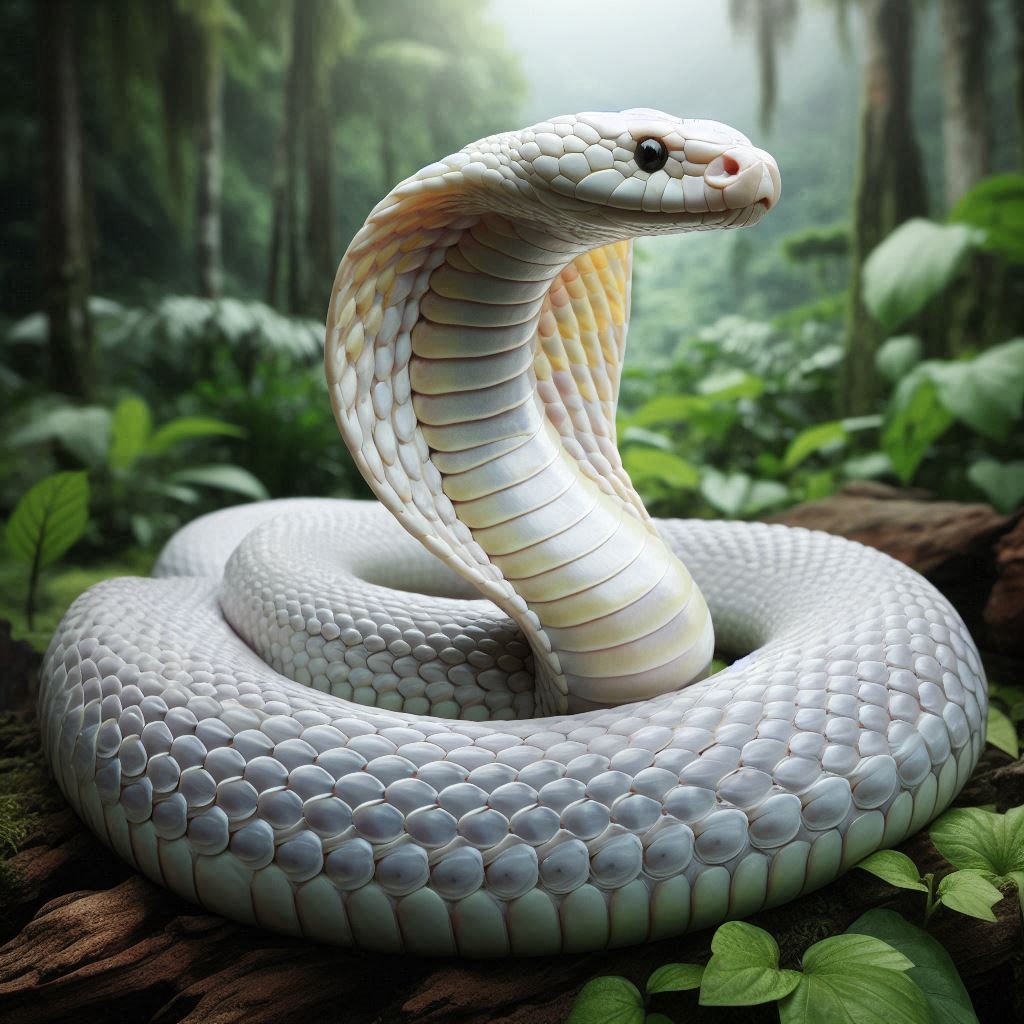
Albino Birds
We only see Albinism in about 1 of every 1800 birds. A true albino bird will have a white beak, white plumage, non-color skin, white talons, and pink or red eyes.
It is important to understand that birds that are naturally white, such as swans, egrets, and geese are not albino.
Albinism in birds refers to those that are normal with color. The inability to hide from predators makes them more vulnerable.

The two most common types of birds to note an occurrence of albinism are the common house swallow and American robin.
There have been notations of albinism in the African penguin, red-winged blackbird, and common barn swallow as well.
Partial albinism, where streaks, patches, or flecks of color are present, is more common than complete albinism in birds.

Albino Turtles
It is not as uncommon to see an albino turtle. Sulcata Tortoises are the most likely type of turtle to see albinism.
Their eyes tend to be a pinkish color and the shells have an almost yellow coloration.
With turtles, pure white color is nearly impossible, even with albinism.
Turtles classified as albinos are able to maintain a long lifespan, unlike other species that have an occurrence of albinism.
Their hard exteriors help to prevent their soft bodies from being subjected to many environmental elements.
Although they do still require plenty of shade and access to water, their function is not as limited as other species.
Vision and sensory organs are slightly affected, but not to the point of labeling an albino turtle as “disabled”.
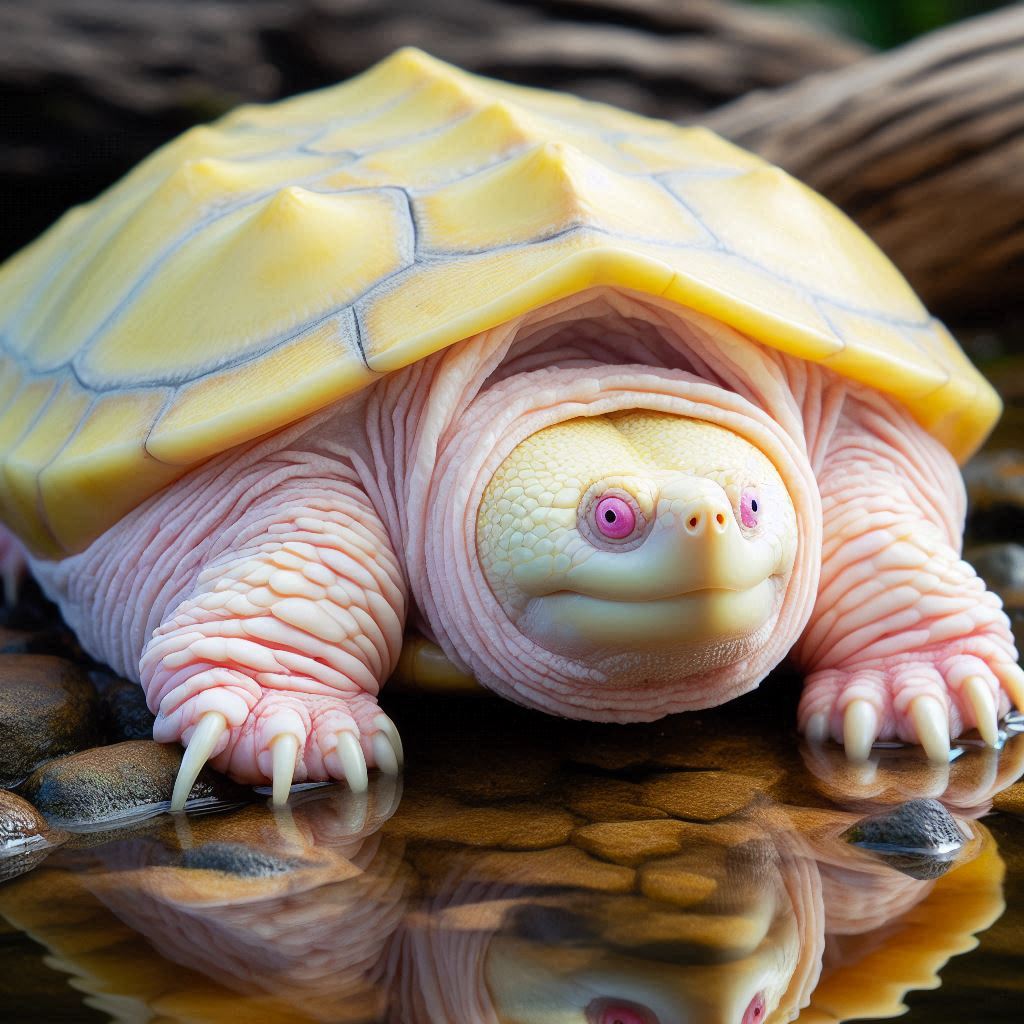
Albino Alligator
Sometimes referred to as the “Ghost of the Swamp” the albino alligator requires special attention.
It is extremely rare for this type of alligator to live in a natural environment.
Experiments show that on exposing to radiant light albino survive no more than 24 hours.
We required A controlled environment that delivers ample shade and controlled radiant light.
To aid sensitivity for Albino animals in captivity we administer D3 supplements.
There is no way to return pigment to the reptile, thus protecting it via supplement and a controlled living environment.
This is the best way to keep the rare reptile nourished and healthy.
An albino alligator is likely to be less hefty than a genetically correct specimen.
This is due to their inability to disguise themselves for hunting purposes.
Genetically correct alligators can grow to 15-feet in length and up to 1,000 pounds in weight.
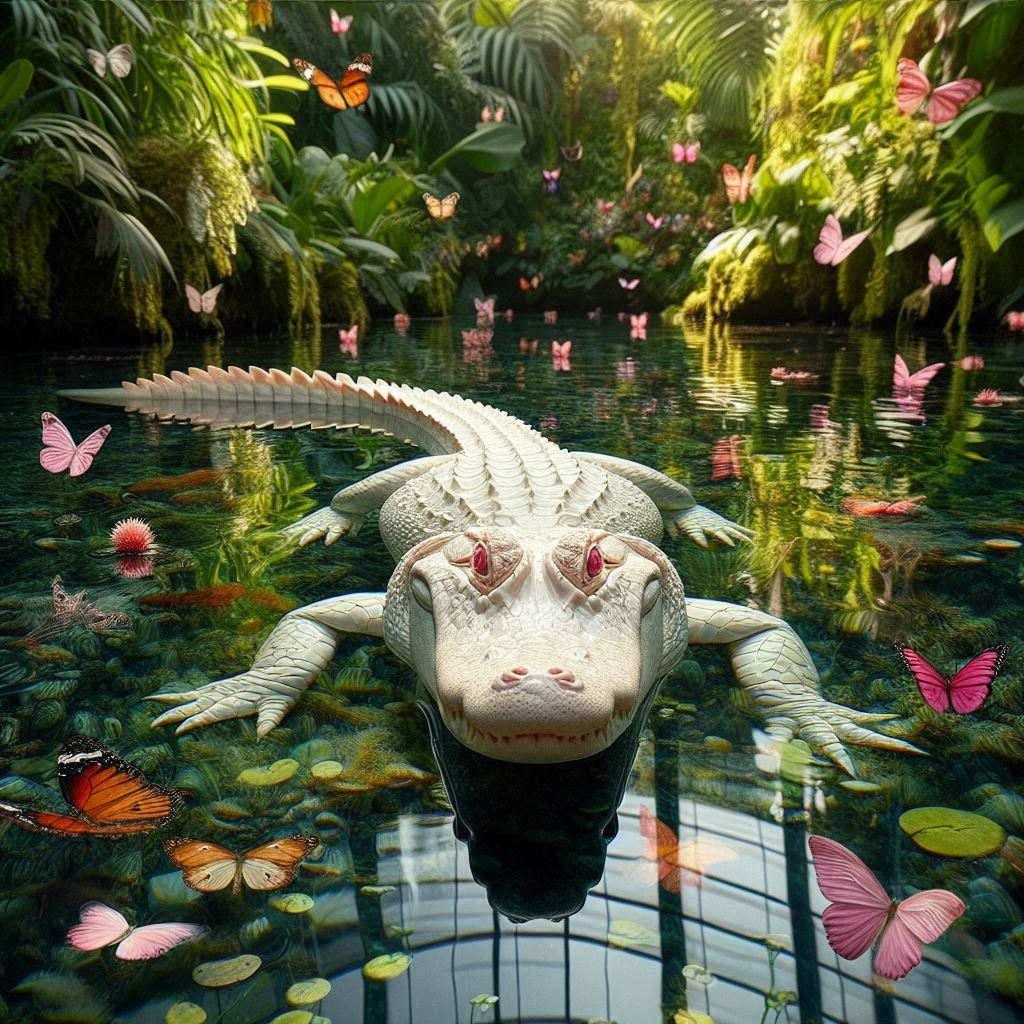
Albino Rat
Although rather common, the albino rat suffers from several deficiencies, including impaired vision.
Unlike many other albino species, the genetic reproduction of rats is in albino form.
Scientists generally do it in order to produce more specimens for experimentation.
Commonly called lab rats, experimentation is easy with an albino rat than the regular one,
Their ability to absorb research chemicals and react to medical procedures in a more natural way than genetically correct rats.
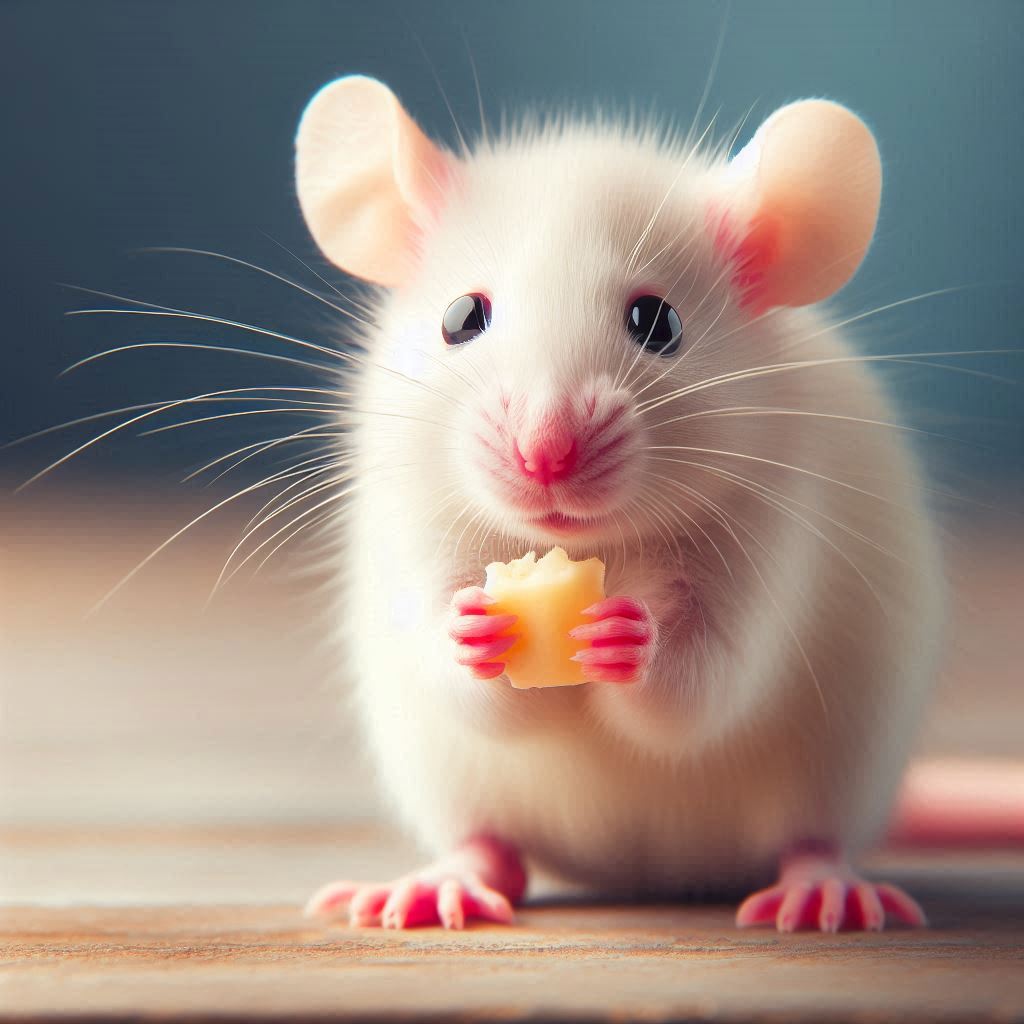
What makes an animal albino?
Albinism occurs by a mutation in one of these genes or melanocytes, found in your skin, hair, and eyes.
What makes albino animals albino? Different types of albinism mainly occur due to gene mutation disorder.
Misconceptions Regarding Albino Animals
People often label albino animals as exotic which is wrong. While they are rare, most species are quite common.
When we document an albino animal, it makes them more valuable and more desirable to pet owners.
Many believe that an albino animal has to be all white and have red eyes.
This is not the case with all species. Some have streaks or patches of pigment.
In frogs, birds and some amphibians, streaks or patches of color is actually rather common.
Not all species will have red eyes either as blood vessels and cells do not always take over the area behind the retina.
Is albinism caused by inbreeding?
Yes, interbreeding could be a reason for albinism but it’s not strictly, In order for an animal to be subject to albinism, both parents must carry this recessive gene.
Even with both parents of an animal carrying the gene, this does not designate a concrete factor that albinism will occur.
What mutation causes albinism in animals?
Oculocutaneous type 2, the most common form of albino in animals, results from a mutation in the OCA2 gene, that encodes the P protein.
There are no medical treatments to return melanin or proper genes to the bodies of these animals.
Most Common Species Affected by Albinism
We often observe Albinism in animals most commonly in birds, reptiles, and amphibians.
Is Albinism Rarely seen in mammals and other species?
These rare occurrences are often explainable, There are only a few documented cases in history, such as the albino gorilla and one albino koala bear.
In birds, the mutation of the gene responsible for assigning a color to feathers and eyes is mutated more often.
While some birds stay true to their specific type, many intermingle.
This recessive gene is stronger in birds than in any other species, with rats being close behind.
What do albino animals look like?
4 Visible Characteristics of albino animals.
- They don’t have any melanin or pigmentation.
- They usually have All-white appearance
- Some also have a pinkish skin as compared to the normal pigmentated of their species.
- Very pale blue eyes or ocean blue eyes.
Struggles Encountered by Albino Animals
An albino animal is rather weak in a variety of aspects. The most prominent being the inability to adapt to their natural environments.
Amphibians, reptiles, and birds are born in order to blend with their surroundings.
The inability to hide when in danger puts them at great risk for harm.
For instance, an albino animal in the large cat species is unable to blend with its territory.
When the grass is green with lush vegetation, an albino animal has no way of disguising itself when predators are near.
Although the animal may be strong and understands how to react, it may not be quick enough to ward off an attack.
Typical Medical Issues Common in Albino Animals
Albino animals suffer from a variety of medical problems, that is sometimes rare to their species.
It is a given that these animals are subject to sensitive skin and must limit sun exposure.
We don’t encounter most albino animals during daylight hours, as they prefer hiding from direct sunlight.
Their lives adapt to be visible after dusk or in the overnight hours when it is less dangerous to be in the sunlight.
Other medical issues in Albino Animals
- Vision impairment
- Speech impairments
- Greater risk of skin cancer
- Hearing impairments
- Difficulty processing tasks
- Difficulty with sensory organs
- Impaired senses of smell
Conclusion
We can teach some animals via human instruction to adapt their lifestyles to embrace their differences with repetition in routine.
An animal will easily become accustomed to repeating routines in order to process commands regain some self-defense mechanisms and adapt to its surroundings.
Albinism has a strict definition with few exceptions. Some consider all-white animals without red eyes to be just white species.
The fact of the matter is that some of these animals are still albino regardless.
The eyes of an albino animal are normally red, again, due to the blood cells that settle behind the retinas,
however, they can be a very light, and almost muted version of a genetically correct member of the species.
Many albino animal species are deemed as being in high demand for research and, becoming more common, as pets.
An inability to provide extensive medical care for an albino animal that is not a bird, reptile, or amphibian is one of the main reasons that these species are kept in a controlled environment.
They are beautiful to look at but require far more care than a common person is capable of providing.
Can Albinism be Cured?
Albinism is a genetic disorder from birth and inherits from parent to offspring, it can be treated but cannot be fully cured.
Can you Prevent Albinism?
No, we cannot prevent it as it is a genetic disorder. There’s no way to prevent albinism if anyone has already been born, but if its genetic history is prior known, measures can be taken for prevention.
FAQ’S
Albinism usually has no effect on lifespan. However, Hermansky-Pudlak syndrome (HPS) a hereditary disorder reduces pigmentation and shortens a person’s lifespan due to lung disease or bleeding problems.
Albinism usually limited activities because of the inability to tolerate sunlight.
Those with albinism are usually healthy as others of their own species, but lack of pigment blocking UV radiation increases the risk of cancers, lung diseases, and other disorders which causes low lifespan
No, they are not aggressive. The results indicate that albinos are less aggressive compared with their pigmented ones.
No, they are not strictly deaf, There is no direct relation between loss in hearing ability and albinism.
Snowflake, an albino gorilla of Spain’s Barcelona Zoo in 2003 was the only known white gorilla having rare skin cancer and albinism.
House martin and the American robin are the most common albino birds species
It is a Myth that People or Animals with albinism are sterile, In fact, albinos can give birth to pigmented children if their partner doesn’t carry a similar regressive albinism gene. Nevertheless, The offspring may be carriers of such genes.
Albinos have poor eyesight, which puts them at risk of being easy prey for predators. But they are only partially blind.
Albinism prevents the body from making melanin, which is responsible for color in eyes, skin, and hair. Most people with ocular albinism have blue eyes. But due to blood vessels inside can show via the colored part of the iris, and they appear pinkish or red.
